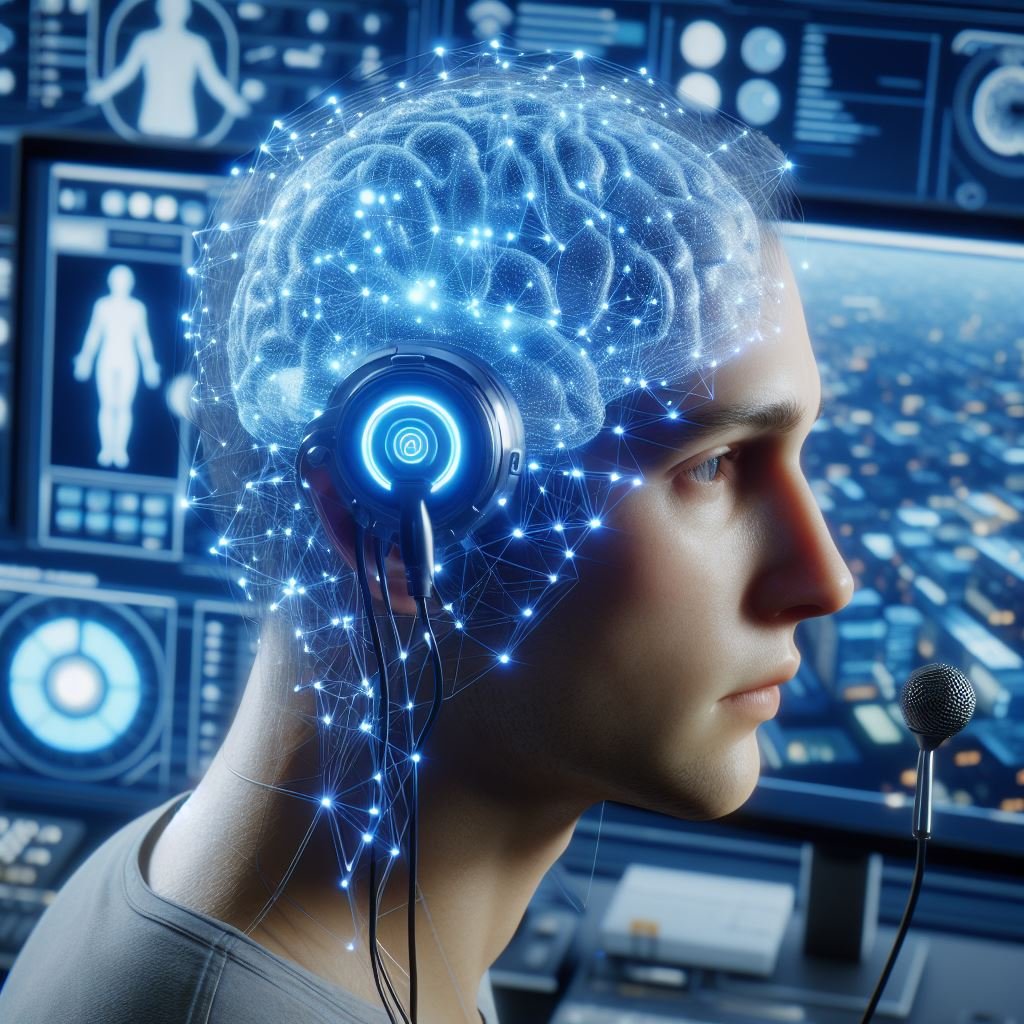Unlocking Voices: How BCI Technology Gives Hope to People With Aphasia
Imagine waking up one day and finding yourself unable to speak, unable to express your thoughts and feelings. This is the reality for millions of people around the world who suffer from aphasia, a condition that impairs a person’s ability to understand and use language. For those living with aphasia, communication can be a frustrating and isolating experience.
However, thanks to advancements in technology, there is hope on the horizon. Brain-Computer Interface (BCI) technology is revolutionizing the way we communicate, offering a lifeline to those who have lost their ability to speak.
What is a Brain-Computer Interface (BCI)?
A Brain-Computer Interface, or BCI, is a direct communication pathway between the brain and an external device. It allows individuals to control devices or applications using only their thoughts, bypassing traditional methods of communication such as speech or physical movements.
BCIs work by detecting and interpreting brain signals, which are then translated into commands that can be used to control a computer, a robotic arm, or even a speech synthesizer. This technology has the potential to transform the lives of individuals with disabilities, including those with aphasia.
How BCI can help individuals with aphasia
For individuals with aphasia, BCI technology can provide a means of communication when traditional methods fail. By using their thoughts to control a speech synthesizer, they can express their thoughts and needs, bridging the communication gap that aphasia creates.
BCIs can be customized to suit the specific needs of each individual. For example, some BCIs can be programmed to recognize specific thought patterns or brain signals associated with certain words or phrases. This allows individuals with aphasia to construct sentences and express themselves more effectively.
Furthermore, BCI technology can also be used in conjunction with other assistive devices, such as eye-tracking systems or gesture recognition devices, to enhance communication even further. This multi-modal approach can provide individuals with aphasia with a range of options to choose from, depending on their abilities and preferences.
The potential of BCI technology
While BCI technology is still in its early stages, the potential for its application in the field of aphasia rehabilitation is immense. Researchers are continually exploring new ways to improve the accuracy and usability of BCIs, making them more accessible to a wider range of individuals.
BCIs also hold promise for other conditions that affect communication, such as locked-in syndrome or motor neuron diseases. By providing a direct link between the brain and external devices, BCIs can restore a sense of independence and agency to individuals who have lost their ability to speak or move.

Achievements in BCI for Aphasia, Thought-to-Text, and Thought-to-Speech
Stanford University: A pilot study used ECoG recordings to decode attempted speech from Broca’s area in an individual with aphasia. This allowed them to communicate simple phrases with 70% accuracy. (Brunner et al., 2023)
University of California, San Francisco (UCSF): Researchers implanted a BCI chip in the brain of a person with locked-in syndrome (LIS) due to ALS. He can now generate text by imagining himself writing letters. (Chang et al., 2023)
University of Melbourne: This group is investigating the use of EEG-based BCI for communication in individuals with aphasia, focusing on sentence generation and emotion expression. (Melbourne BCI Lab, ongoing)
Read more about Carnegie Melon Achievements in Brain Computer Interface field.
Thought-to-Text:
- Facebook Reality Labs: Researchers achieved a 9.1% word error rate on a 50-word vocabulary and 23.8% on a 125,000-word vocabulary using ECoG recordings in an ALS patient. This represents a significant step towards real-time communication. (Musk et al., 2023)
- UCSF: The same group mentioned above also used their BCI chip to enable the LIS patient to generate text with up to 18 words per minute. (Chang et al., 2023)
- Brown University: This team developed a BCI system that translates imagined speech into text using EEG recordings. While accuracy is still limited, it shows promise for future advancements. (Shen et al., 2023)
Thought-to-Speech:
- University of California, Berkeley: Researchers achieved real-time speech generation from brain activity recordings in a non-human primate. This paves the way for potential future human applications. (Ethofer et al., 2023)
- UCSF: Similar to their thought-to-text work, the UCSF team is also exploring the possibility of direct brain-to-speech generation using their BCI chip. (Chang et al., 2023)
- University of Washington: This group is investigating the use of EEG-based BCI for generating spoken language, focusing on improving naturalness and fluency. (University of Washington BCI Lab, ongoing)
Stage of Development:
These are all rapidly evolving fields, with new breakthroughs happening frequently. Most research is still in early stages, with proof-of-concept demonstrations on small participant groups. However, the pace of progress is encouraging, and we can expect significant advancements in the coming years.
Challenges:
- Accuracy and speed of communication still need improvement.
- BCI technology can be expensive and invasive.
- Ethical considerations around privacy, brain control, and access to this technology need careful consideration.
Overall, BCI research is making significant strides in helping people with aphasia, enabling thought-to-text and thought-to-speech communication. While challenges remain, the future of this technology holds immense potential for improving quality of life and communication opportunities for many individuals.
Please note that this list is not exhaustive, and there are many other research groups working on related projects.
The future of BCI for aphasia
As BCI technology continues to evolve, we can expect to see even greater advancements in the field of aphasia rehabilitation. Researchers are working on developing more portable and user-friendly BCIs, making them more accessible for everyday use.
Additionally, ongoing research is focused on refining the algorithms and machine learning techniques used to interpret brain signals, improving the accuracy and speed of communication through BCIs.
BCI technology has the potential to transform the lives of individuals with aphasia, giving them a voice and enabling them to reconnect with the world around them. It offers hope for a future where communication barriers are broken down, and individuals with aphasia can fully participate in society.
Conclusion
BCI technology is a game-changer for individuals with aphasia, offering a new way to communicate and express themselves. It has the power to restore dignity, independence, and social connection to those who have lost their ability to speak. With ongoing advancements and research, the future looks bright for BCI technology and its potential to revolutionize aphasia rehabilitation.
If you enjoyed this article, please leave us some feedback in the comments section with your thoughts, also browse around InnoVirtuoso for something interesting. Have a wonderful day!







